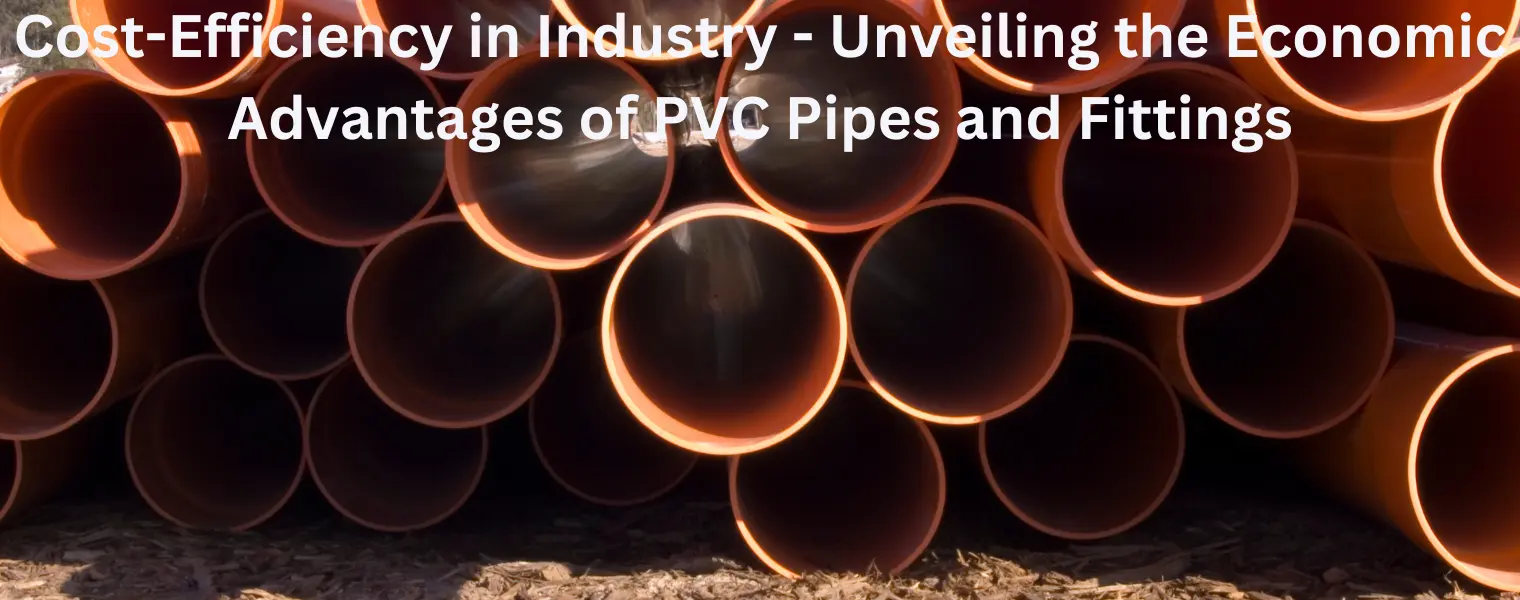
In the dynamic landscape of industrial operations, optimizing costs while maintaining reliability is a constant pursuit. In this quest for efficiency, the choice of materials plays a pivotal role. Polyvinyl Chloride, or PVC, has emerged as a cost-effective solution for industrial piping systems, offering a range of economic advantages that contribute to the bottom line. In this exploration, we delve into the economic benefits that make PVC pipes and fittings a savvy choice for industry.
One of the primary economic advantages of PVC pipes and fittings lies in their affordability from the outset. The cost of manufacturing PVC is relatively low compared to other materials, translating into cost savings for industrial projects. This initial affordability is particularly beneficial for large-scale installations where material costs constitute a significant portion of the budget.
The lightweight nature and simplicity of PVC pipes and fittings contribute to ease of installation. Compared to heavier materials like metal pipes, PVC is easier to handle and requires less specialized equipment. This ease of installation translates into reduced labor costs, as installations can be completed more efficiently, saving both time and money.
PVC's resistance to corrosion and degradation significantly lowers maintenance requirements over the lifespan of an industrial piping system. Unlike some metal alternatives, PVC is not prone to rust or scaling, reducing the need for frequent inspections and repairs. The result is minimized downtime and maintenance costs, allowing industrial processes to run smoothly without constant interruptions.
PVC pipes and fittings boast exceptional durability, with a lifespan that rivals or exceeds many traditional materials. The long-lasting nature of PVC reduces the frequency of replacements, sparing industries from the costs associated with premature material degradation. This longevity transforms the investment into a lasting asset, contributing to sustainable cost-efficiency.
The lightweight nature of PVC pipes not only aids in installation but also contributes to energy efficiency during transportation. The reduced weight translates into lower transportation costs, especially when compared to heavier materials. This aspect aligns with sustainability goals and further reduces the overall economic footprint of industrial projects.
In industries where corrosive materials are transported, the chemical resistance of PVC becomes a cost-saving attribute. PVC's inherent resistance to a wide range of chemicals protects against corrosion, preventing the need for specialized coatings or frequent replacements due to chemical degradation. This resilience contributes to substantial savings in maintenance and replacement costs.
The adaptability of PVC pipes and fittings allows for customization to suit specific industrial requirements. The ability to easily modify and configure PVC systems minimizes the need for costly retrofitting or major overhauls. Industries can adapt their piping systems as needed without incurring significant expenses, ensuring that the infrastructure evolves with changing operational demands.
Beyond direct economic advantages, PVC pipes and fittings contribute to sustainable cost-efficiency. The reduced need for replacements, coupled with recyclability and energy efficiency, aligns with broader sustainability goals. This holistic approach ensures that cost savings extend beyond immediate financial gains, contributing to the overall economic and environmental sustainability of industrial operations.
In industry, material choice is critical for efficiency and economic viability. PVC pipes and fittings offer a wise investment with affordability, low maintenance, and durability. From easy installation to long-term sustainability, PVC provides economic advantages for a robust industrial infrastructure. Polyfab excels in HDPE fittings, offering high quality globally. Contact Polyfab today for the best HDPE fittings and experience the difference.